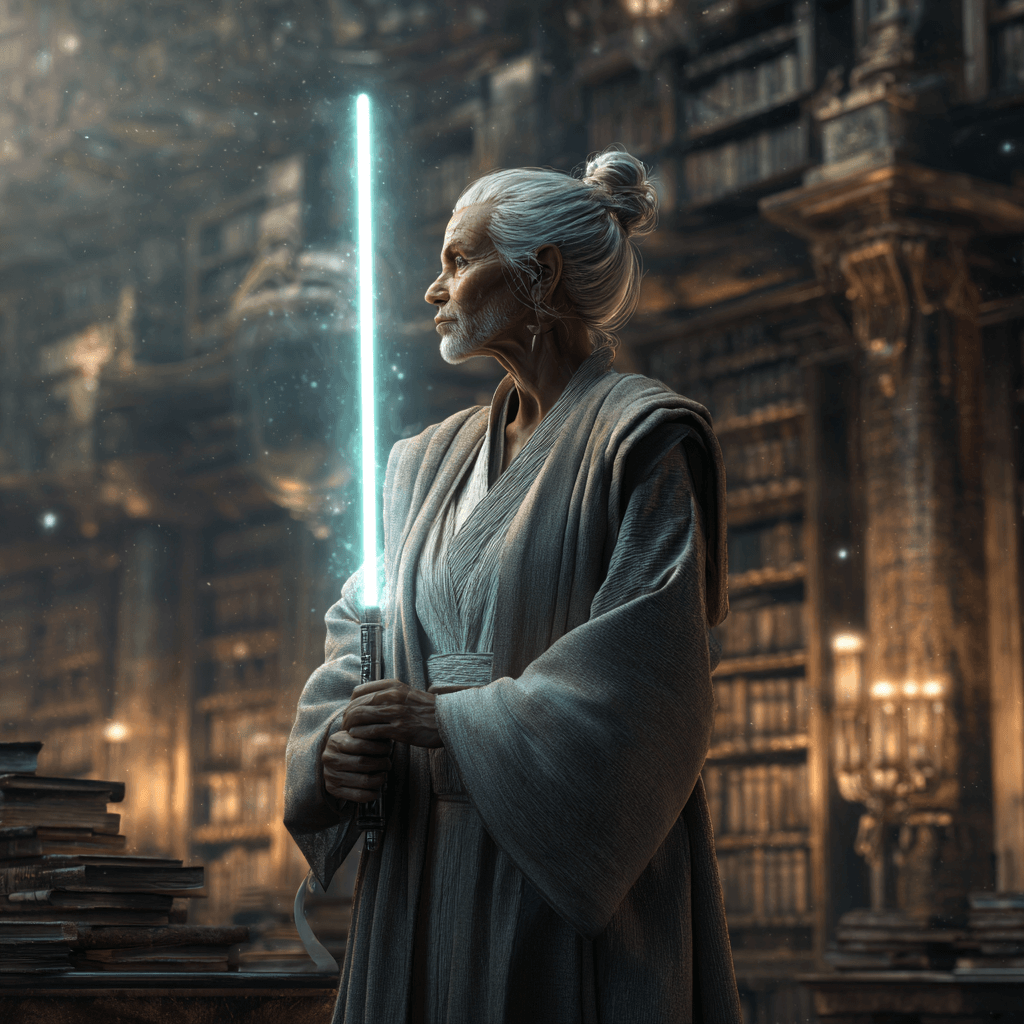Have you ever wondered how the noble ideals of medieval knights shaped the legendary Jedi in Star Wars lore?
When fans dive deep into the origins of Jedi philosophy, terms like Star Wars riddare (Swedish for “knight”) highlight how George Lucas drew heavily on historical chivalric traditions to build the Jedi Order. Just like the knights of old, Jedi embody courage, discipline, and selflessness — values that continue to inspire audiences across generations.
Concept art often depicts Jedi as futuristic knights, combining lightsabers with the virtues of honor and justice.
The Meaning of “Riddare” in Star Wars
In Scandinavian translations of the films, Jedi are often referred to as “Jedi Riddare”, directly linking them to the knightly archetype. This connection reinforces the idea that the Jedi are not merely warriors, but guardians of peace and justice, entrusted with upholding the galaxy’s moral balance.
By calling Jedi riddare, the franchise taps into centuries of storytelling about noble protectors, giving Star Wars a universal resonance across cultures.
Jedi Chivalry and Knightly Virtues
The Jedi embody the core principles of knightly virtues:
- Courage – facing the dark side without fear.
- Honor – respecting the Jedi Code and living with integrity.
- Selflessness – placing the needs of others before their own.
- Discipline – training tirelessly to master both the Force and combat.
These values connect Jedi directly to the medieval ideals of European knighthood, grounding the fantastical elements of Star Wars in real-world traditions.
Discover more about Jedi combat sabers here.
The Evolution of Jedi as Star Wars Knights
The concept of Star Wars knights has evolved dramatically across the saga:
- The Old Republic Era – Jedi knights were closer to warrior-monks, deeply tied to galactic politics and large-scale battles.
- The Prequel Trilogy – Jedi served as generals and peacekeepers, highlighting their chivalric duty to protect the Republic.
- The Sequels and Beyond – Jedi became symbols of legend, embodying hope and spiritual resilience rather than formal military service.
This evolution of Jedi reflects how Star Wars adapts the idea of knighthood for different generations of fans.
Symbolism of Lightsabers in Jedi Chivalry
The lightsaber functions as both a weapon and a symbol of knightly authority. Much like medieval swords, each lightsaber represents discipline, lineage, and identity.
A Star Wars riddare wields their saber not for conquest, but as a promise to defend life and uphold justice — a true embodiment of chivalric ideals within Star Wars lore.
Parallels Between Historical Knights and Jedi
Historians and fans alike note striking similarities between medieval orders of knights and Jedi traditions:
- Code of Conduct – The Jedi Code mirrors medieval chivalric codes.
- Mentorship – Padawan and Master relationships echo the knight-squire dynamic.
- Symbolic Armor/Robes – Jedi robes function as their equivalent of knightly garb, humble yet dignified.
- Questing Spirit – Jedi missions across the galaxy resemble knightly quests for justice.
These parallels enrich the mythology, allowing audiences to connect Jedi ideals with real-world traditions of honor.
The Cultural Impact of Jedi Chivalry
The notion of Jedi chivalry has influenced pop culture, cosplay, and even modern ethical debates. By embodying knightly virtues in a futuristic setting, Star Wars encourages fans to explore questions of morality, responsibility, and heroism.
It’s no wonder that Star Wars knights remain iconic figures, inspiring fan art, novels, and films that extend the Jedi legacy far beyond the big screen.
Read More: Anakin, Luke, and Rey: The Journey of the Graflex Lightsaber Across Generations
Final Thoughts
The Star Wars riddare are more than fictional warriors — they are heirs to a tradition of chivalry that transcends time and culture. By blending knightly virtues with futuristic weaponry, the Jedi embody timeless ideals of honor, courage, and justice.
Whether on medieval battlefields or galactic frontiers, the spirit of the knight continues to thrive in the stories of the Jedi.
FAQs
1. What does “Star Wars riddare” mean?
It’s a Scandinavian term meaning “Star Wars knights,” used to describe Jedi as protectors and guardians of peace.
2. How are Jedi connected to knightly virtues?
Jedi embrace courage, honor, selflessness, and discipline, echoing the codes of medieval chivalry.
3. Did George Lucas base Jedi on real knights?
Yes, Lucas drew inspiration from samurai and medieval knights, merging them into the Jedi Order.
4. How have Jedi evolved as knights in Star Wars?
From warrior-monks of the Old Republic to legendary symbols of hope in the sequels, Jedi roles have shifted across eras.
5. What role does the lightsaber play in Jedi chivalry?
Like a knight’s sword, the lightsaber is both a weapon and a symbol of duty, justice, and personal identity.
Stay Connected with Nsabers
💬 Tell us in the comments — Do you see Jedi more as futuristic samurai or as knights of the galaxy?




Leave a comment
All comments are moderated before being published.
This site is protected by hCaptcha and the hCaptcha Privacy Policy and Terms of Service apply.